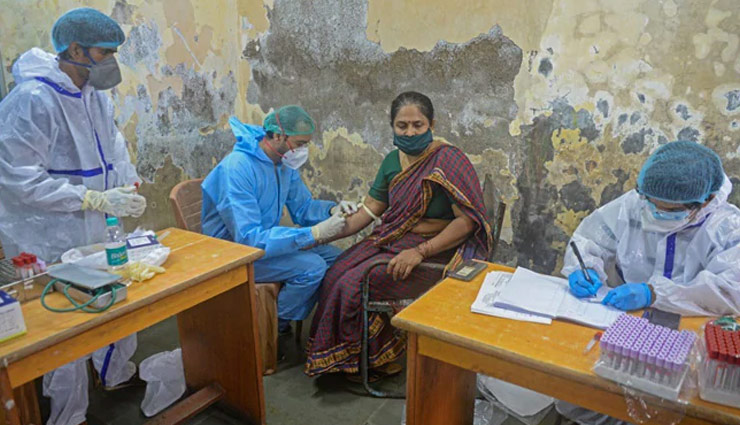- Home›
- News›
- Coronavirus In Mumbai / Are We Closer To Herd Immunity, Wonders Ashwini Bhide After Sero Survey
Coronavirus In Mumbai / Are We Closer To Herd Immunity, Wonders Ashwini Bhide After Sero Survey
By: Priyanka Maheshwari Wed, 29 July 2020 10:40:10

After sero-surveillance study revealed that 57 percent of slum population in Mumbai and 16 percent of non-slum residents in three civic wards had developed antibodies, BMC additional municipal commissioner Ashwini Bhide on Tuesday wondered whether Mumbai is getting closer to herd immunity.
Taking to Twitter, Ashwini Bhide wrote: "First round report of #SeroSurveillance for #SARCCoV2 infection in #Mumbai indicates that 57% of #Slum population & 16% of non-slum population have developed antibodies. Infection fatality rate is very low. Are we closer to herd immunity?"
The sero-surveillance had started on June 3 and 6,936 samples out of an estimated 8,870 were collected from slum and non-slum population of three civic wards - R-North, M-West, and F-North - in the first half of July. It showed a high proportion of asymptomatic COVID-19 infection in the city.

The study revealed that 57 percent of slum population and 16 percent of non-slum residents in these civic wards had developed antibodies, the BMC said on Tuesday. "These results will be valuable to learn more about herd immunity," stated a Brihanmumbai Municipal Corporation (BMC) release.
The civic body is going to conduct another survey that will provide information about infection spread and throw light on herd immunity as well, it said. The Serological Surveillance for SARS-CoV2 infection was jointly commissioned by NITI Aayog, the BMC, and the Tata Institute of Fundamental Research (TIFR). A serological survey involves testing of blood serum of individuals to check for the prevalence of antibodies against infection.
As a large cross-sectional survey in India, this study aimed to estimate Sero-prevalence in the population-based on random sampling methodology from age and gender stratified samples from the general population and Health care workers, and at two-time points to infer epidemic spread.
The results of the study suggest that asymptomatic infections are likely to be a high proportion of all infections. "The higher prevalence in slums could be possibly due to population density and shared common facilities (toilets, water points). Taking together the current prevalence (estimated here) and records from BMC on reported deaths, the infection fatality rate (IFR) is likely to be very low (0.05-0.10 percent). Among others, this could be attributed to effective containment efforts and active measures to isolate symptomatic cases by MCGM," BMC said.





